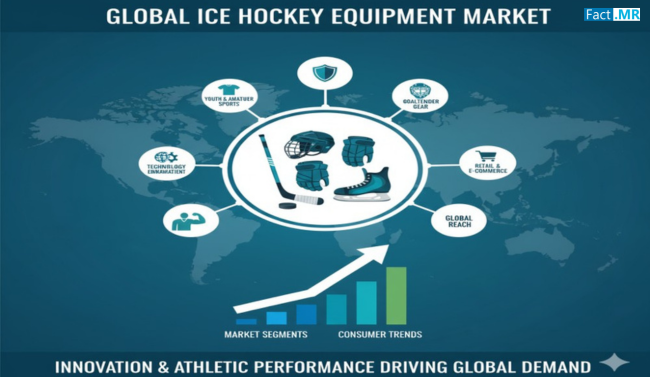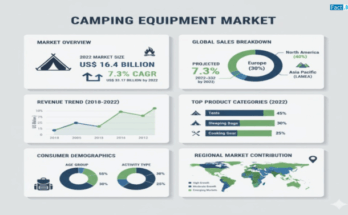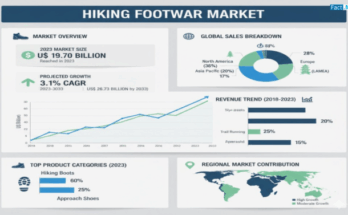The ice hockey equipment market is witnessing dynamic growth as the sport continues to gain popularity worldwide. From professional leagues to amateur clubs and youth programs, the demand for advanced equipment that ensures safety, comfort, and performance is surging. Technological advancements, innovative materials, and a focus on player protection are transforming ice hockey gear into high-performance solutions that cater to athletes at all levels.
Ice hockey is a physically demanding sport, combining speed, agility, and strength, which places significant emphasis on protective and performance-enhancing equipment. The market includes a wide range of products such as helmets, skates, sticks, gloves, protective padding, and goaltender gear. Modern equipment designs prioritize ergonomics, lightweight construction, durability, and compliance with international safety standards.
Manufacturers are increasingly investing in research and development to introduce equipment that enhances player performance while reducing injury risk. Materials like carbon fiber, advanced plastics, and high-impact foams are being utilized to provide superior protection without compromising mobility. Additionally, the integration of smart technology in gear—such as sensor-enabled helmets for impact monitoring—represents a significant innovation trend in the market.
Regional Insights:
North America remains the largest market for ice hockey equipment, driven by the sport’s deep-rooted presence in countries such as the United States and Canada. Strong participation in professional leagues, youth programs, and community clubs sustains consistent demand for high-quality gear.
Europe shows significant adoption, particularly in Northern and Eastern regions where ice hockey enjoys a long-standing tradition. Countries like Sweden, Finland, Russia, and the Czech Republic contribute heavily to equipment demand through both professional and amateur sports participation.
Asia-Pacific is emerging as a growth region for ice hockey, with increasing awareness of the sport and investment in ice rinks and training facilities. Nations such as Japan, South Korea, and China are promoting ice hockey through school programs and recreational leagues, creating new opportunities for equipment manufacturers.
Latin America and the Middle East & Africa are gradually expanding their presence in the market. While ice hockey is still niche in these regions, growing interest in winter sports, recreational ice rinks, and international sporting events is expected to drive future adoption.
Key Trends & Forecast:
- Technological Advancements in Gear:
Equipment innovation is focused on enhancing player safety, performance, and comfort. Lightweight helmets, breathable protective padding, and ergonomically designed skates improve agility and reduce fatigue during gameplay. - Material Innovation:
High-performance materials such as carbon fiber sticks, reinforced plastics, and shock-absorbing foams provide durability and impact resistance. These innovations not only improve safety but also enhance equipment longevity. - Customization and Personalization:
Increasingly, athletes prefer customized equipment that reflects personal style, team branding, and fit requirements. Custom-designed sticks, helmets, and gloves are gaining traction among both professional and amateur players. - Youth and Amateur Segment Growth:
Ice hockey participation among younger age groups is expanding, driven by grassroots programs and school leagues. This trend is boosting demand for age-appropriate, safety-compliant gear. - Sustainability in Manufacturing:
Manufacturers are adopting eco-friendly materials, reducing chemical use, and implementing sustainable production practices. Recyclable components and environmentally conscious packaging are becoming key considerations in product development. - Rise of E-commerce and Direct-to-Consumer Sales:
Online retail platforms and brand-specific stores provide convenience and accessibility, enabling players to purchase equipment directly from manufacturers and suppliers. Digital platforms also facilitate customization, virtual fittings, and interactive product demos.
Applications & End-Use Outlook:
Ice hockey equipment serves multiple end-use segments, from professional leagues to recreational players:
- Professional Players:
High-performance equipment designed for elite athletes ensures maximum protection, precision, and competitive advantage. Advanced sticks, skates, and protective gear enhance gameplay at top-tier competitions. - Amateur and Recreational Players:
Safety and comfort are primary priorities for casual and amateur participants. Equipment for recreational users is designed to be durable, affordable, and easy to maintain while still meeting safety standards. - Youth Programs:
Protective gear for children and teenagers focuses on lightweight designs, adjustable fittings, and certified safety compliance. Youth hockey programs increasingly drive demand for age-specific equipment. - Training and Practice Facilities:
Ice hockey academies and sports facilities invest in durable training gear, including practice sticks, helmets, protective padding, and goalie equipment. These products are optimized for repeated use and safety during skill development sessions.
Competitive Landscape:
The ice hockey equipment market is highly competitive, with established global brands and regional manufacturers vying for market share. Companies are focusing on innovation, quality, and brand recognition to maintain their position. Key strategies include introducing advanced materials, developing ergonomic designs, enhancing safety features, and engaging with athletes for product feedback.
Collaborations with professional athletes, sports clubs, and leagues are essential for market penetration and credibility. Product endorsements, sponsorships, and event partnerships play a critical role in shaping consumer perception and driving sales.
After-sales service, warranty programs, and equipment maintenance solutions are additional competitive differentiators. Brands that provide excellent customer support and proactive engagement with sports communities gain trust and long-term loyalty from users.
Challenges & Opportunities:
- Challenges:
The market faces challenges such as high production costs of advanced materials, regulatory compliance, and potential safety recalls. Seasonal demand fluctuations and the niche nature of the sport in some regions also affect market stability. - Opportunities:
Growing global interest in ice hockey, the expansion of youth programs, and the adoption of technology-enhanced equipment create ample opportunities for manufacturers. Emerging markets present potential for growth as new ice rinks and sports facilities are developed. Sustainability initiatives and eco-friendly equipment innovations offer additional avenues for differentiation and brand positioning.
Conclusion:
The ice hockey equipment market is poised for continued growth, driven by innovation, increasing global participation, and the rising importance of safety and performance in the sport. As the industry evolves, manufacturers that combine advanced materials, technological integration, and sustainable practices will stand out in the competitive landscape.
Ice hockey equipment today is more than functional gear—it is a blend of safety, style, and technology that enhances the player experience. With the expansion of professional leagues, youth programs, and recreational participation, the market is set to thrive, offering opportunities for both established brands and emerging players to cater to a growing, passionate audience worldwide.



